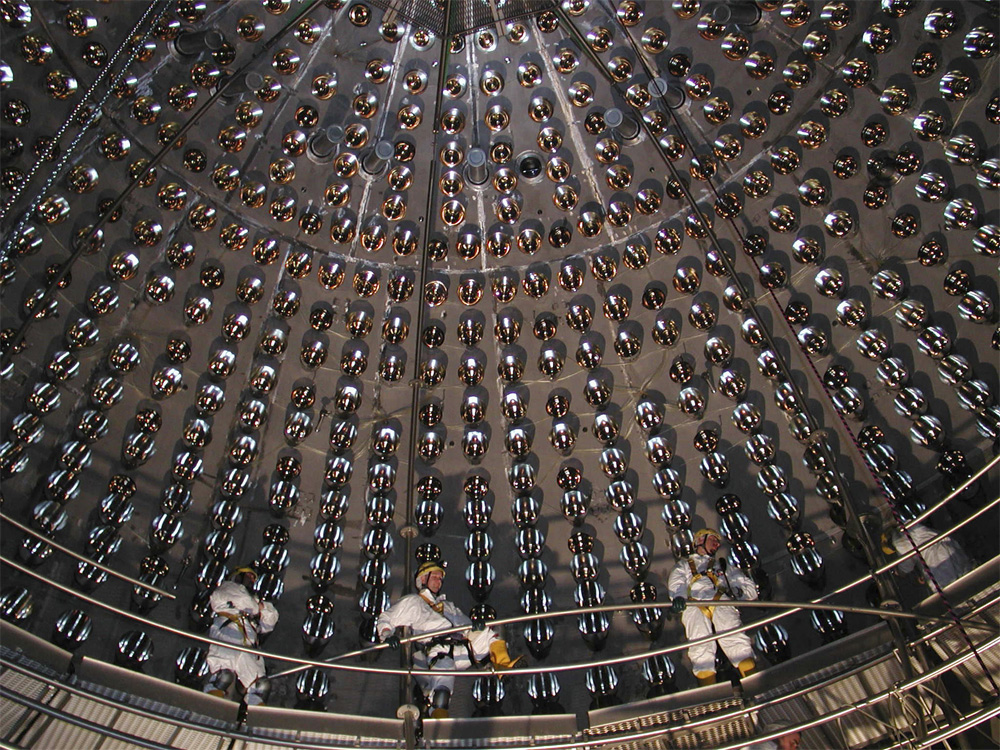Einstein's Theory May Put Brakes on Faster-Than-Light Neutrinos

Just days after Albert Einstein's theory that nothing moves faster than light was called into question by a startling neutrino experiment, the long-dead physicist might have come to his own rescue.
Einstein's general theory of relativity contends that a slight difference in the force of gravity at two different places causes clocks in those places to tick at different rates. Carlo Contaldi, a theoretical physicist at Imperial College London, argues that when physicists recently measured neutrinos traveling at 1.000025 times light-speed between Switzerland and Italy, they didn't fully correct for this effect, and that failing to do so could have caused their shocking results.
"I think there are significant questions as to whether or not their clocks were synchronized correctly," Contaldi told Life's Little Mysteries, a sister site to LiveScience. His paper, posted online to the physics arXiv preprint site on Sept. 30, is one of the first to challenge the neutrino experiment's process.
In the OPERA experiment (Oscillation Project with Emulsion-tRacking Apparatus), physicists working at the Gran Sasso National Laboratory in Italy — a lab buried almost a mile underground — timed the arrival of muon neutrinos coming from CERN, a physics facility near Geneva, Switzerland, 451 miles (731 kilometers) away. To the astonishment of the entire world, the neutrinos clocked in 60 nanoseconds sooner than a light beam traveling the same distance would have done.
This was remarkable because neutrinos have mass (although very little), and, as Einstein taught the world, massive objects would seem to need infinite energy to travel at light speed, let alone faster. If Einstein was wrong, most modern physics theories topple with him.
But Contaldi contends that OPERA's clocks, rather than its neutrinos, may have been out of whack. Gran Sasso and CERN are at different distances from the center of the Earth, so the force of gravity varies slightly between the two labs. In an effect known as "gravitational time dilation," gravity causes time to drag, just as it stretches space. The different gravitational strengths at the two labs therefore mean that clocks at CERN run slightly slower than clocks at Gran Sasso. And on the lightning-fast timescales involved in the OPERA experiment, a small difference in the clock speed is significant enough to matter.
Pasquale Migliozzi, a physicist on the OPERA experiment who acts as the group's spokesperson, told Life's Little Mysteries and Contaldi that the OPERA team matched up their clocks in Gran Sasso and Geneva by synchronizing them with a third clock — that of a GPS satellite. In their setup, the neutrino departure and arrival times were both measured by the same GPS satellite, and the times were logged on GPS receivers in the two labs. The team brought in METAS, a Swiss metrology institute, to calibrate the receivers at the two locations, and Migliozzi said that the time measurements using this method should have been accurate to within 2 nanoseconds.
Sign up for the Live Science daily newsletter now
Get the world’s most fascinating discoveries delivered straight to your inbox.
But Contaldi says that GPS synchronization is not nearly that accurate, because GPS satellite signals are themselves subject to gravitational time dilation. GPS receivers make corrections to account for this, but nonetheless the clock signals are only guaranteed to be correct on the order of 100 nanoseconds. Therefore, Contaldi argues, they can't be used to time events that happen faster than that.
"From what I've seen, my estimate is that there are tens of nanoseconds of uncertainty in GPS synchronization, and from what I can tell, [the OPERA scientists] assume [their clocks] were perfectly synchronized," Contaldi said. If he is right, then an error range of tens of nanoseconds would greatly reduce the significance of a measurement in which neutrinos beat light by tens of nanoseconds.
Contaldi concedes that the OPERA team may have made more of an effort to synchronize its clocks than it elucidated in the first draft of the paper. But if so, he says, it is crucial that those physicists explain it. "I hope they are preparing a more in depth discussion of how they took their clocks to be synchronized."
Migliozzi didn't comment on Contaldi's further inquiries, but the back-and-forth is likely to continue. The OPERA scientists have not purposely withheld information about their experiment and have welcomed criticism from the outset. Even they admit that the details of their experimental setup are more likely to be flawed than are the fundamental laws of physics.
Follow Natalie Wolchover on Twitter @nattyover. Follow Life's Little Mysteries on Twitter @llmysteries, then join us on Facebook.
Natalie Wolchover was a staff writer for Live Science from 2010 to 2012 and is currently a senior physics writer and editor for Quanta Magazine. She holds a bachelor's degree in physics from Tufts University and has studied physics at the University of California, Berkeley. Along with the staff of Quanta, Wolchover won the 2022 Pulitzer Prize for explanatory writing for her work on the building of the James Webb Space Telescope. Her work has also appeared in the The Best American Science and Nature Writing and The Best Writing on Mathematics, Nature, The New Yorker and Popular Science. She was the 2016 winner of the Evert Clark/Seth Payne Award, an annual prize for young science journalists, as well as the winner of the 2017 Science Communication Award for the American Institute of Physics.










